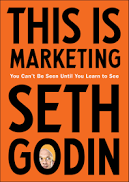Don’t Let the Marketing Dose Make the Poison
Earlier this week our Say It For You blog highlighted nuggets of marketing wisdom contained in well-known proverbs. A classic maxim in the field of toxicology is “The dose makes the poison.”, meaning that often, a substance is toxic to the body only if it is administered in too high a dosage…
“If urgency becomes the sole focus of marketing efforts, it can overshadow the brand’s core values and identity,” shopcreatify.com points out. “While scarcity can be a motivator, the primary focus should be on the benefits and features that truly resonate with your target audience.”
What’s more, Timothy Hodges of HonorAging, says, “Marketing too much can send mixed messages to existing and potential clients. For potential clients, you can be perceived as desperate, struggling, and/or not sending a clear enough message regarding your product or services”.
Interesting…At Say It For You, I use the word “marketing” in a very specialized sense. That’s because, in today’s world, whatever your business or profession, there’s almost no end to the information available to consumers on the Internet. Our job then, as content writers, isn’t really to “sell” anything, but rather to help readers absorb, and put to use, all that information.
Marketing, I believe, is about differentiating what you think about what you do and why you think the way you do. Taking a stance on issues relevant to your business or profession puts you in the role of subject matter expert and opinion leader.
I remember reading a piece by Sophia Bernazzani Barron of Hubspot in which she discussed “after-the-fact” selling, accomplished by describing an “extra” benefit added to things online prospects have already demonstrated is important to them. Blog marketing is, in fact, a tool for that “extra benefit” type of selling; because blogs are relational and conversational, they can be persuasive in a low-key manner.
Content marketing, remember, is a positive – it’s only when offered in too high a dose, that the marketing has the potential to “poison” the selling process.






Follow us online!